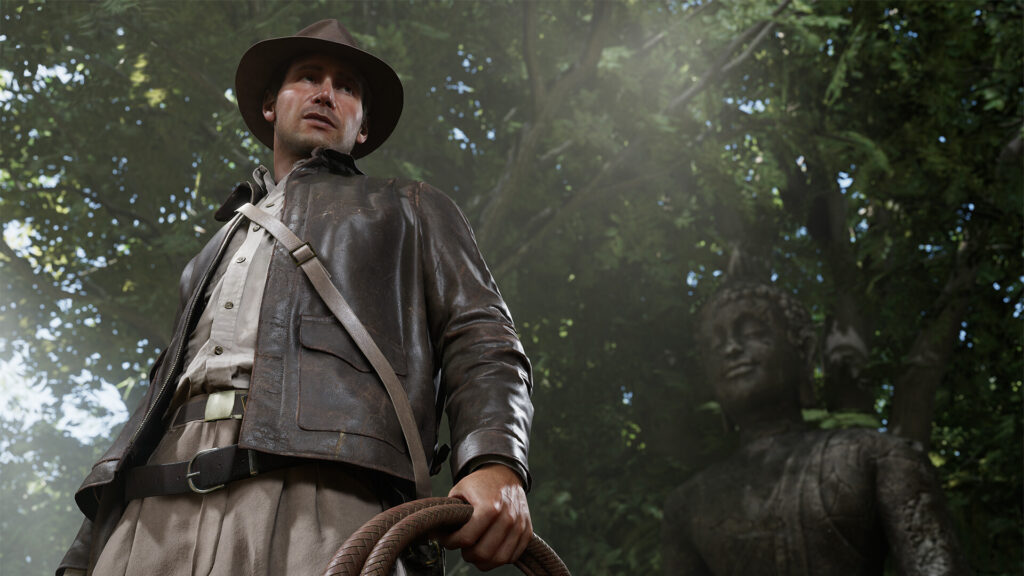
The gaming industry is buzzing after the release of Indiana Jones and the Great Circle, a title that has sparked extensive discussion regarding its choice of a first-person perspective. In a recent roundtable interview, developers from MachineGames explained their creative decision, emphasizing the immersive quality of this viewpoint. The game, which has received a five-star review, aims to allow players to fully embody the legendary archaeologist, Indiana Jones.
During the interview, a journalist posed an intriguing question about the game’s perspective, highlighting a topic that has captured public interest since the unveiling of its first trailer. Jens Andersson, the design director, pointed out that MachineGames has a longstanding tradition of creating first-person experiences, particularly through the Wolfenstein series. He articulated the benefits of this approach, noting that it enhances the experience of uncovering artifacts and solving puzzles while allowing players to “become” Indiana Jones.
Many players initially voiced concerns about the first-person perspective, likely influenced by the legacy of similar adventure games like Uncharted and Tomb Raider, which traditionally employed a third-person viewpoint. Critics argue that third-person perspectives offer enhanced control during platforming segments and keep protagonists visually present at all times. However, this perspective can also limit innovative storytelling and gameplay mechanics, as MachineGames has demonstrated through its commitment to first-person design.
The studio’s dedication to this perspective endured despite challenges during development. As Andersson stated in a recent talk at Develop:Brighton, “We love that perspective. It’s a great way of telling stories.” This conviction has translated into a game that effectively matches its character with its mechanics, allowing players to experience the story in a deeply personal way.
As players navigate through the game, they encounter a variety of unique elements. For instance, the journal that tracks objectives is presented as a leather-bound diary, filled with sketches and photographs, adding a personal touch to the adventure. Combat is characterized by the sound of Indiana’s whip, creating a sense of chaotic engagement. While stealth is encouraged, encounters often emphasize humor, such as when Indy humorously reacts during a firefight.
The choice of a first-person perspective also enhances the game’s atmosphere. Players often feel a genuine sense of claustrophobia, especially when traversing ancient tombs filled with sand or navigating dark rooms where danger lurks. Such experiences highlight the advantages of first-person storytelling, which allows for a more visceral connection to the game world.
Fans of the first-person perspective value the immersive nature that it provides. It transforms the experience from merely observing a character to genuinely embodying them. This approach is reminiscent of titles like Alien: Isolation, where players feel as if they have stepped behind the screen rather than simply directing characters from afar. It is this level of immersion that has contributed to the enduring reputation of games like Riddick: Escape from Butcher Bay, developed by the same team that created Indiana Jones and the Great Circle.
Looking ahead, the success of Indiana Jones and the Great Circle may serve as a pivotal moment in how developers approach adaptations of famous characters. The game’s unique perspective invites players to trust the expertise of studios like MachineGames when crafting interactive adventures. As the game continues to resonate with audiences, upcoming downloadable content promises to expand on the immersive experience that fans have come to cherish. This title has quickly established itself as one of the most beloved adventure games of all time, and its innovative approach to storytelling through the first-person perspective sets a new standard for the genre.







